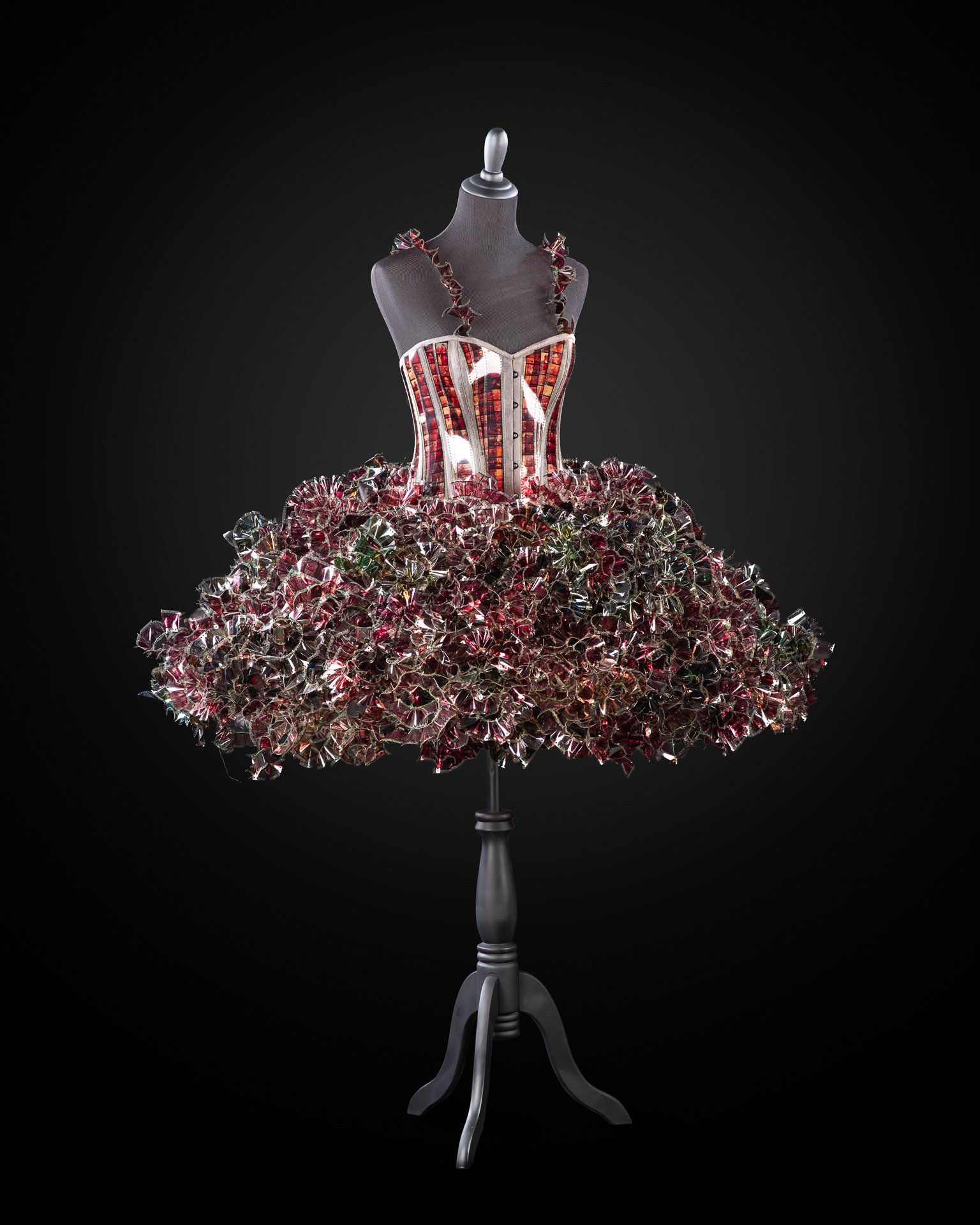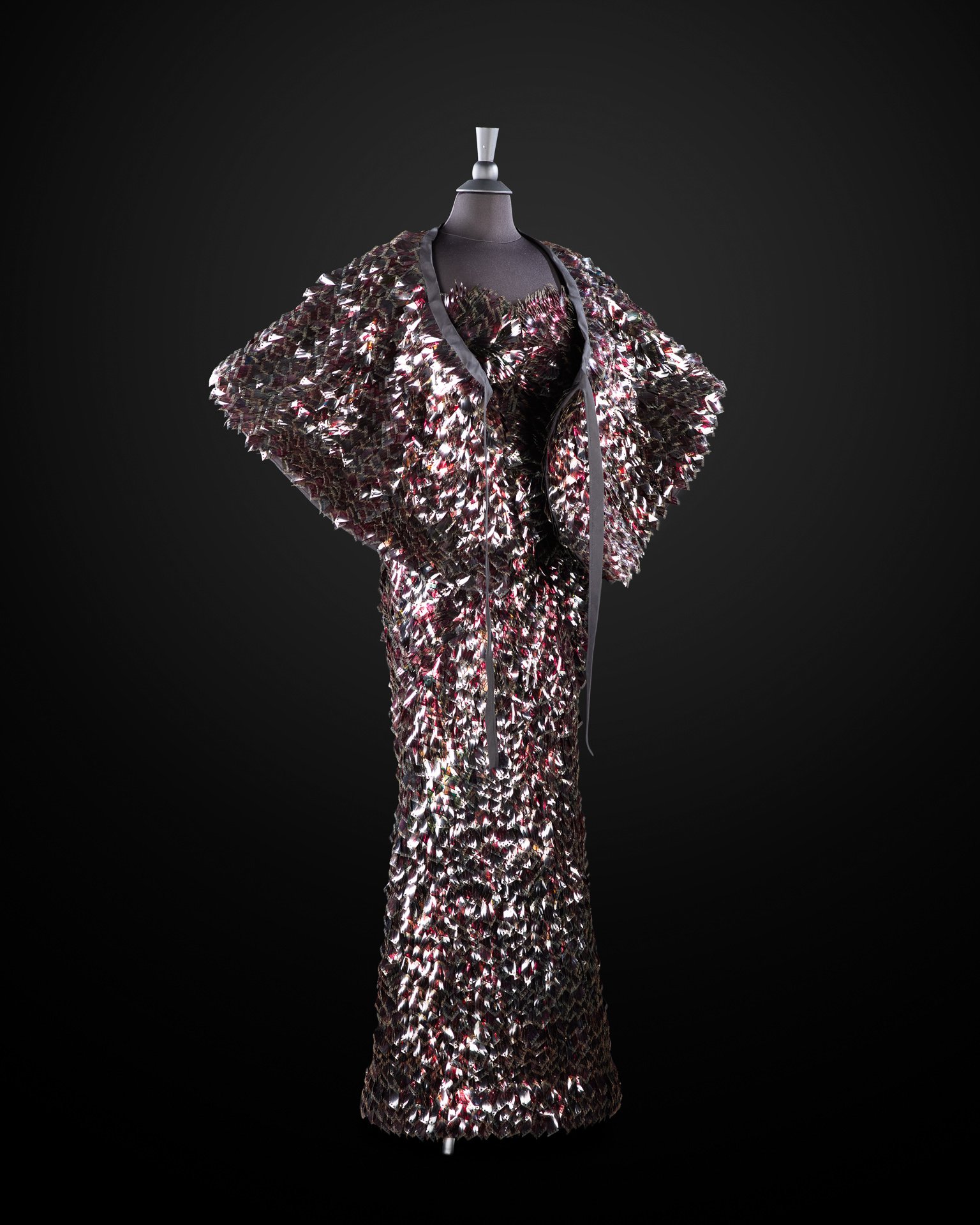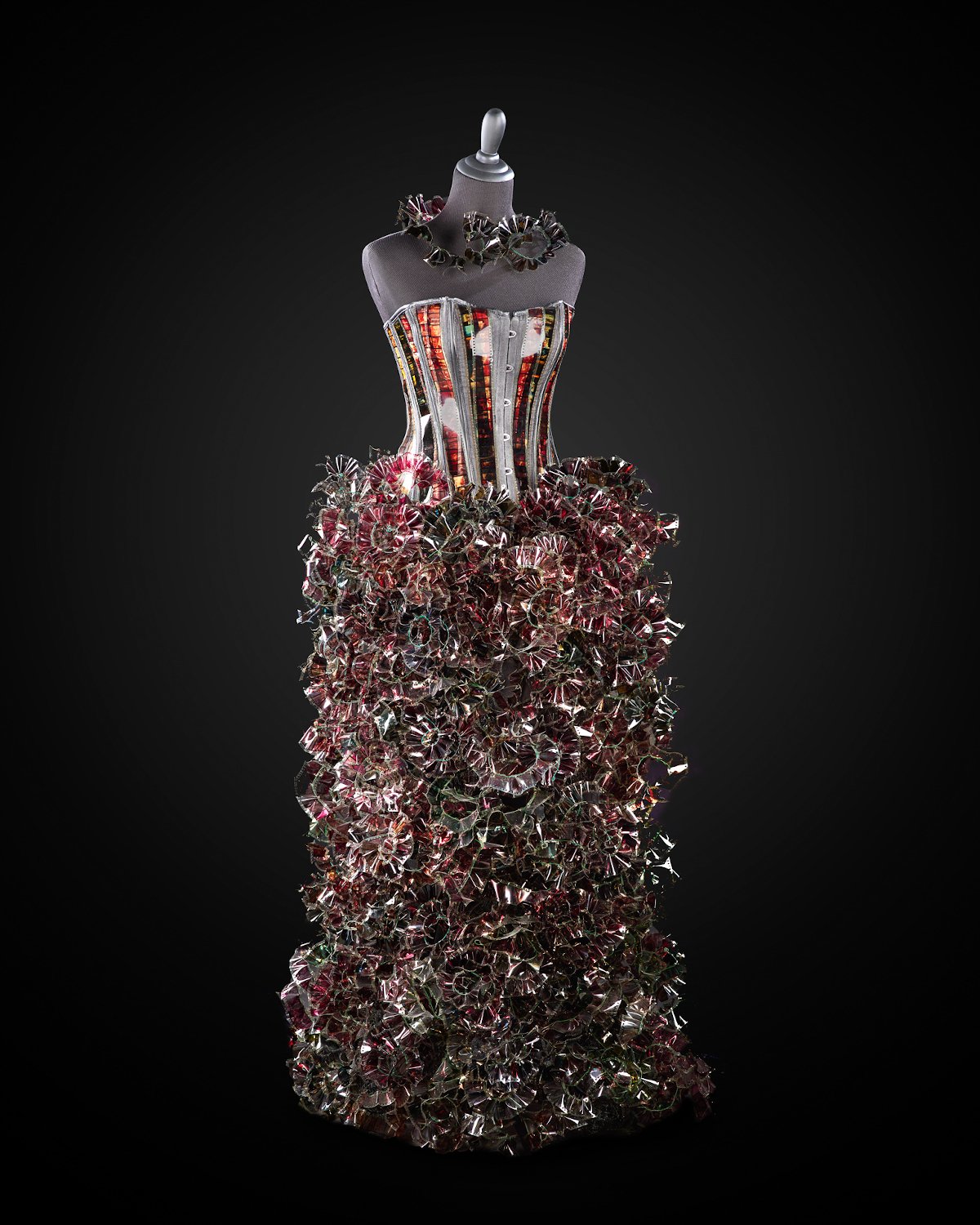Dresses Created out of Vintage Educational Filmstrips
In the fine arts, often non-mainstream media are overlooked. Fiber arts is one such category. Fiber arts refers to the fine art object whose materials consist of natural or synthetic fibers and other components. Its focus on materials and the manual labor on the part of the artist to establish the work's significance and prioritization of aesthetic values over utility. Dana Baldwin has created film dresses that address material over content. The Film Dresses themselves are a trove of information regarding history, science and language. Baldwin has chosen to sew, weave, cut, and attach the presence of the strips into traditional dress patterns. The deconstruction of the film actually strengthens the beauty held within the creative mind of Baldwin. Each dress, with its stunning silhouette, becomes a sculptural and an aesthetic statement of present day fashion. The Film Dresses are surreal majestic objects that blend fashion and sculpture. But these same works obscure race or class-- allowing viewers to look without bias towards these headless figures' identity. These fiber sculptures are crafted from an array of materials that include film, wire, satin ribbon and a dark cotton material that serves as their undergarment. Woven together, they produce what appears to be an uncomfortable yet seductive garment. They rely on the reminiscence of home-tailored clothing with the tedious and intrinsic details from tightly melded materials. Far from ornamental, these film dresses explore the tension between "low craft" and "high art," creating exemplary sculptural forms which are relevant to Dana Baldwin's practice of making art as a whole. Metaphorically, these sculptures of attire are amour-- enforced by the knowledge of the film strip strips they come from. They are striking in their proud and powerful stance. They teeter between figurative and non -figurative assemblages with the intricate accumulations of film strips-- outdated due to modern technology but molded into 21st century fine art sculptures. They occupy space and invite further investigation by those viewing them without judgment. John Heintzman



